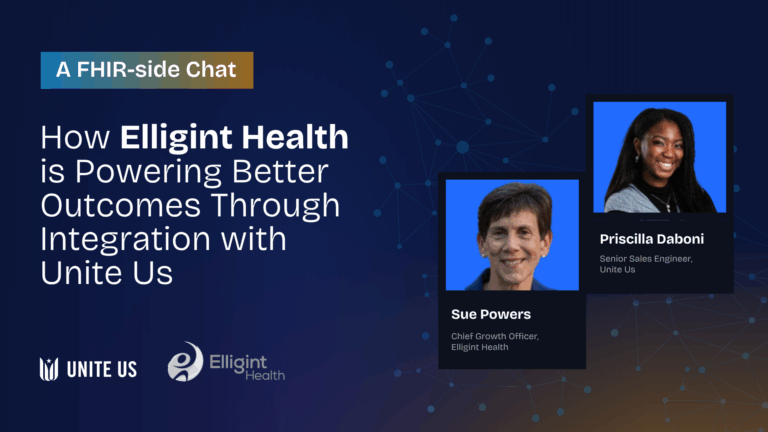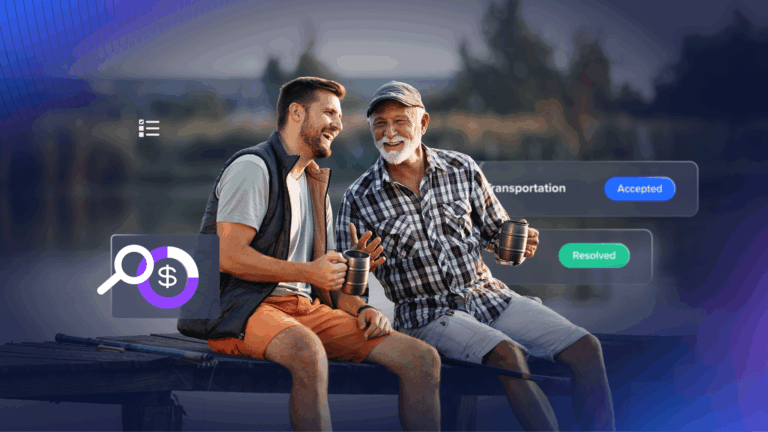
Everything You Missed at One Continuum 2025
From product innovation to rural health transformation to collaborative success, here’s your One Continuum 2025 recap.
Earlier this month, leaders across the country came together in New York City for One Continuum—Unite Us’ flagship event dedicated to transforming how health care is delivered nationwide.
More than 200 attendees from government, healthcare, community-based organizations, and payers gathered at this year’s event. The theme—Charting the New Future of Care—highlighted the next frontier of whole-person care: building sustainable, data-driven ecosystems that reach every community.
OC2025 Key Takeaways
- Technology is critical to a seamless ecosystem: Seamless data, payment, and analytics integration turns isolated systems into a true care ecosystem.
- Partnership is the engine of sustainable change: Aligning policy, funding, and collaboration amplifies impact across every part of the network.
- Access defines the strength of a network: Extending connected care to rural communities strengthens reach, reliability, and impact across the system.
- Impact is measured by outcomes: Linking data to strategy and demonstrating ROI keeps the focus on results that matter.
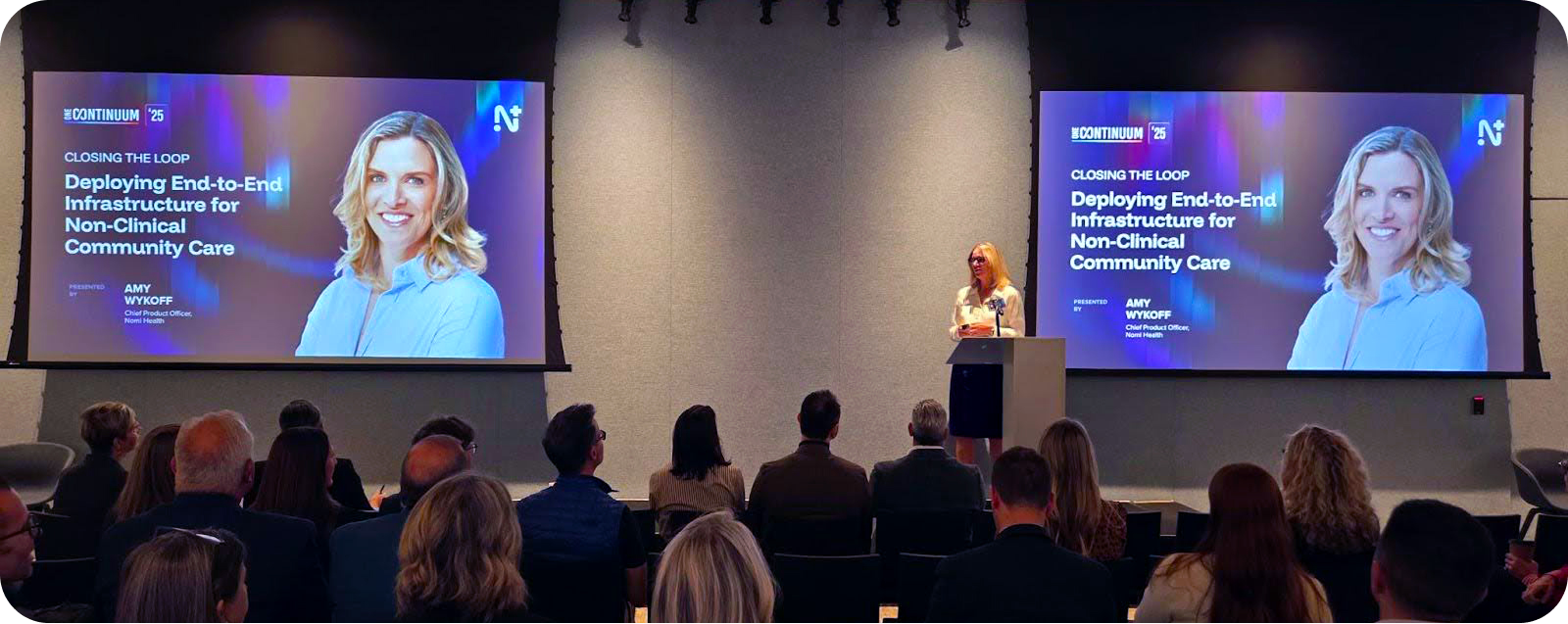
1. Product Innovation: Bringing Insights Into Action
The event kicked off with a keynote from Amy Wykoff, Chief Product Officer at Nomi Health, titled “Closing the Loop: Deploying End-to-End Infrastructure for Community Care.” This invigorating keynote set the tone for the day and stressed the need for data, technology, and networked systems to move beyond referral hand-offs toward measurable outcomes.
“People aren’t just one program. People aren’t just one need. People are people.”
— Amy Wykoff, Chief Product Officer, Nomi Health
In the Product Hub drop-in space, attendees explored the latest from Unite Us—platform enhancements, predictive analytics, new innovative partnerships (like Nomi Health and Deloitte), and our payments infrastructure. Sessions offered one-on-one time with product leads, sparking ideas for how organizations can operationalize this technology to further their impact.
“We have to be able to operate in a space where we’re innovating, trying things out, adjusting, and trying again.”
— Amy Wykoff, Chief Product Officer, Nomi Health
💡Key Takeaway: Innovation is no longer optional—it’s expected. The conversation has shifted from “we should coordinate care” to “here’s how we build the infrastructure that supports it at scale.”
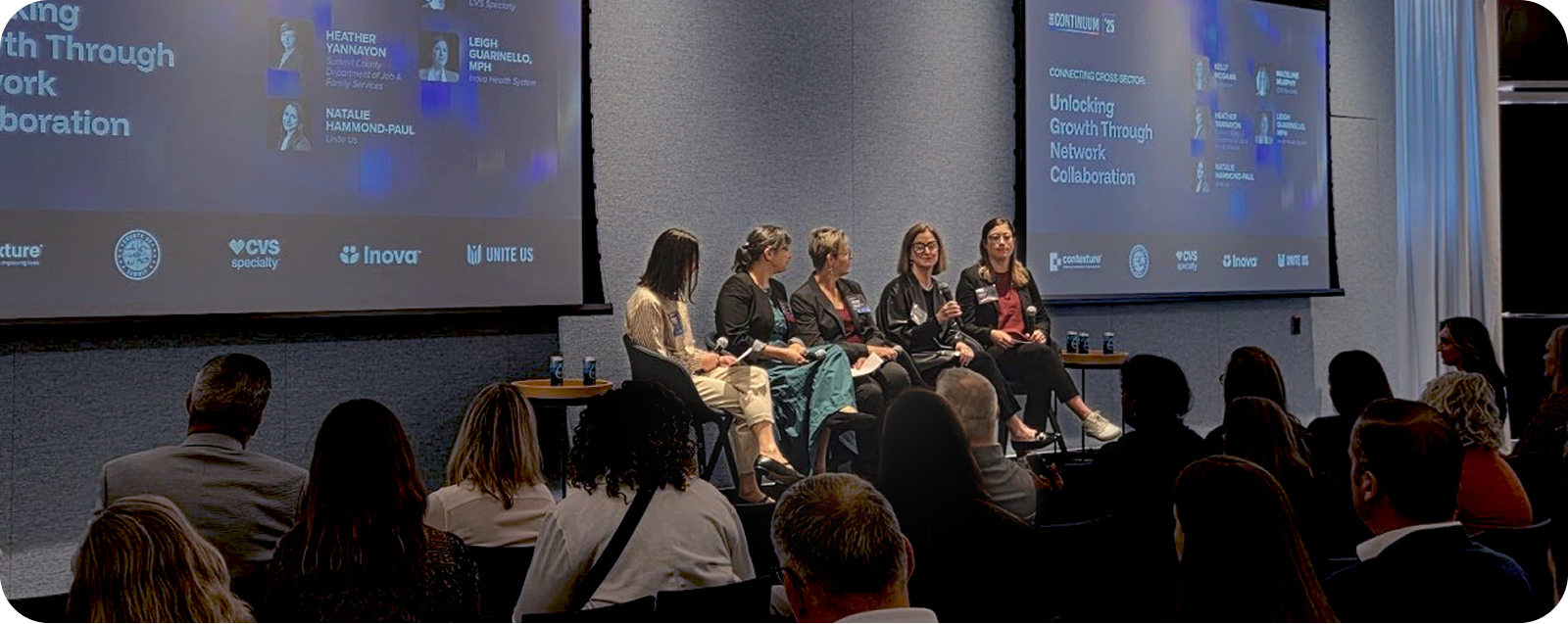
2. Cross-Sector Collaboration: Building Systems That Work for Everyone
A highlight panel, “Connecting Cross-Sector: Unlocking Growth Through Network Collaboration,” brought together voices from government, healthcare, and the private sector. Heather Yannayon (Summit County Dept. of Job & Family Services), Kelly McGann (Contexture), Madeline Murphy (CVS Speciality), and Leigh Guarinello, MPH (Inova Health System) discussed the structural levers that enable successful partnerships: shared governance, aligned data strategy, and sustainable funding.
Finish the sentence: cross-sector collaboration works when…..
“When you listen.” — Leigh Guarinello, MPH, Inova Health System
“When you start small and share your success and failures.” — Heather Yannayon, Summit County Dept. of Job and Family Services
“When you commit to the long haul.” — Madeline Murphy, CVS Speciality
“When you co-create a shared vision.” — Kelly McGann, Contexture
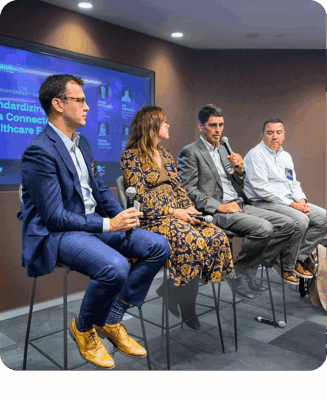 Another breakout, “The Interoperability Imperative: Standardizing Data for a Connected Healthcare Ecosystem,” featured leaders Sarah DeSilvey (The Gravity Project), Jim Kirkwood (NY State Dept. of Health), and David Horrocks (New York eHealth Collaborative)—exploring how statewide frameworks and national data-sharing standards (such as FHIR) are enabling seamless integration across clinical and community-based care.
Another breakout, “The Interoperability Imperative: Standardizing Data for a Connected Healthcare Ecosystem,” featured leaders Sarah DeSilvey (The Gravity Project), Jim Kirkwood (NY State Dept. of Health), and David Horrocks (New York eHealth Collaborative)—exploring how statewide frameworks and national data-sharing standards (such as FHIR) are enabling seamless integration across clinical and community-based care.
💡Key Takeaway: The policy and systems layer is moving from theory to practice. Networks, interoperability, and cross-sector collaboration are no longer “nice to have,” but are core to scaling impact.
3. Rural Health Transformation: Meeting People Where They Are
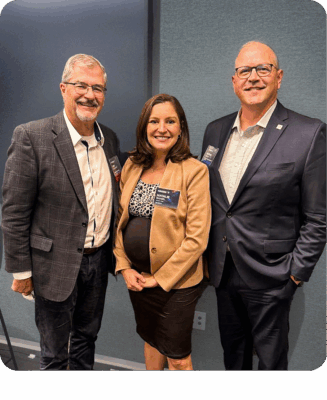 One of the most timely tracks of the day focused on rural health transformation and the opportunity rural communities have to innovate. “Beyond Resilience: Rural Health’s Path to Innovation and Lasting Impact,” moderated by Natalie Daniel (Unite Us) and featuring speakers like Kirk Mathews (MO HealthNet) and Marvin Smoot (Bothwell Regional Health Center).
One of the most timely tracks of the day focused on rural health transformation and the opportunity rural communities have to innovate. “Beyond Resilience: Rural Health’s Path to Innovation and Lasting Impact,” moderated by Natalie Daniel (Unite Us) and featuring speakers like Kirk Mathews (MO HealthNet) and Marvin Smoot (Bothwell Regional Health Center).
The speakers shared how limited access, workforce shortages, and non-medical needs require tailored approaches—and how evolving funding models and technology investments are rising to meet that challenge.
💡Key Takeaway: Whether urban or rural, the goal is the same: person-centered care that responds to lived experiences, supported by data and networks.
4. Looking Ahead: Driving ROI and The Future of Connected Care
Meanwhile, a breakout on “Measuring Impact: Using Evaluation to Prove and Improve Program ROI” showed how outcomes-driven metrics are gaining traction and importance—illustrated via case studies (like a $21M projected ROI in Ohio) shared by Unite Us team members.
“We take a comprehensive approach to how we define value and impact. Ways to define value could look like cost savings, retention, quality, efficiency, utilization, and improving patient outcomes.”
— Amanda Terry, Unite Us
The closing panel, “Mission Possible: How CBOs Are Tapping Tech to Expand Their Impact,” brought the day’s conversations full circle—grounding the future of connected care in the lived experience of community-based organizations (CBOs). Moderated by Moira Kenney (Unite Us), the discussion featured Eric Rochman (God’s Love We Deliver), Rachelle Simon (United Way of Pettis County), William Thornton (YMCA of Greater Richmond), and Jenn Stivers (Community Hope), who shared how they’re leveraging technology to expand access, strengthen collaboration, and scale outcomes.
“When systems can fade into the background, and not impede the work, that’s when we can really do the work the right way. With Unite Us, we have a true end to end solution — from confirming eligibility to sending a referral for a service, and then being able to invoice for it. That has allowed our care navigators to be able to do what they do best, which is help people.”
— Eric Rochman, God’s Love We Deliver
As the day concluded with partner awards, the message was clear: the momentum built so far is just scratching the surface of what’s to come. The next frontier will involve scaling measurement, expanding reimbursement models, and embedding non-medical care workflows alongside clinical care.
💡Key Takeaway: If 2024 was about why we need whole-person care, 2025 proved how we get it done—and 2026 will be about scaling what works across every community.

